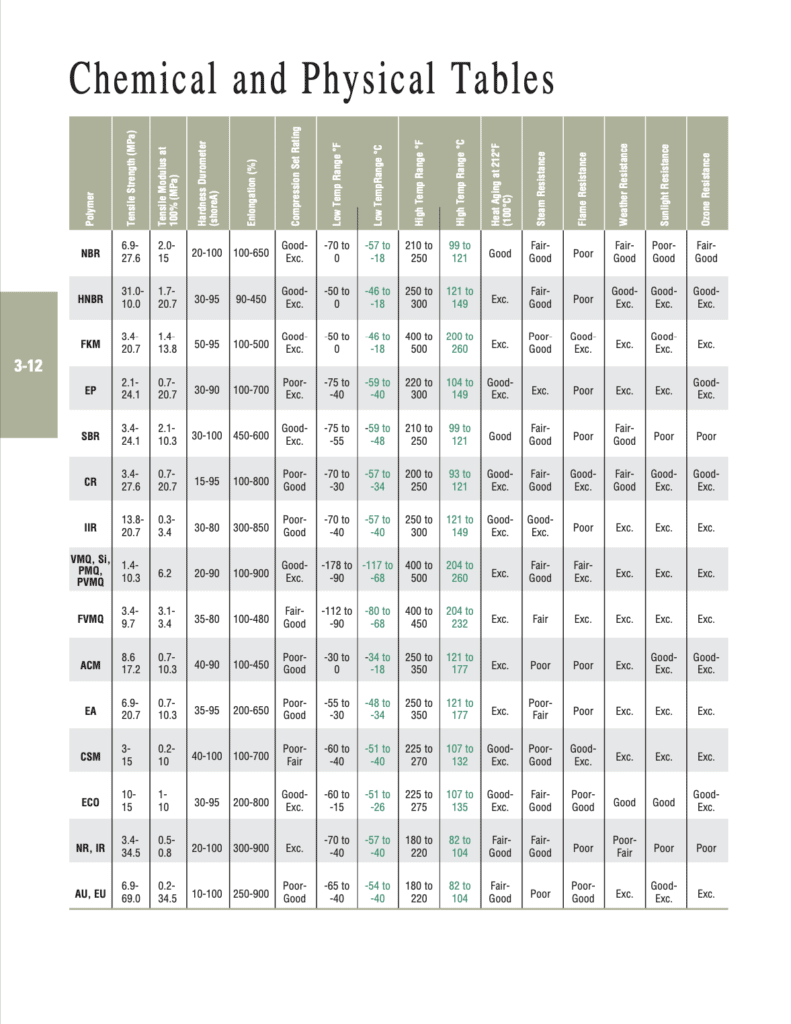
Elastomers / Rubber Materials
When specifying an elastomer / rubber material for your application, there is a lot to consider.
Temperature, environment, compatibility, hardness, compression, and certifications all have to be taken into account.
We know this can be daunting, and that is why we have an industry leading material science team and tool kit dedicated to helping find the best material fit for your application. Learn more by viewing our compound table below or exploring materials in our elastomer / rubber material selection tool.
View Our Compound Table
Chemical Terms, Abbreviations, Trade Names
Chemical Terms, Abbreviations, Trade Names
| Chemical Term | ASTM Designated Abbreviation | Polymer Trade Names |
|---|---|---|
| Acrylonitrile Butadiene | NBR, XNBR | Nipol®, Krynac®, Paracril® |
| Chlorinated Polyethylene | CM | Tyrin® |
| Chlorosulfonated Polyethylene | CSM | Hypalon® |
| Epichlorohydrin | CO, ECO | Hydrin® |
| Ethylene Acrylic | AEM | Vamac® |
| Ethylene Propylene Diene Monomer | EPDM | Buna-EP®, Nordel®, Royalene®, Vistalon® |
| Fluorocarbon | FKM, FFKM | Dyneon Fluoroelastomer®, Viton® |
| Fluorosilicone | FVMQ | |
| Highly Saturated Nitrile | HNBR | Therban®, Zetpol® |
| Isobutylene Isoprene | IIR / XIIR | Butyl |
| Polyacrylate | ACM | HyTemp® |
| Polybutadiene | BR | Budene®, Taktene® |
| Polychloroprene | CR | Neoprene, Baypren® |
| Polyisoprene: | ||
| • Natural | NR | SMR®, Pale Crepe, Smoked Sheet, |
| • Synthetic | IR | Natsyn® |
| Silicone | VMQ, PMQ, PVMQ | Silastic®, Elastosil® |
| Styrene Butadiene | SBR | Plioflex®, Stereon® |
| Urethane (Polyester or Polyether) | AU or EU | Adiprene®, Millathane®, Vibrathane® |
All polymer trade names are registered trademarks of their respective companies and are not affiliated with Minnesota Rubber and Plastics.Chemical and Physical Tables
Chemical and Physical Tables
Click below to view the Elastomers/Materials: Chemical and Physical Tables PDF
